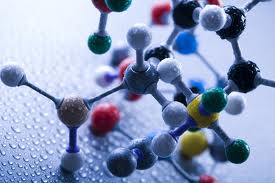According to recent findings, P53
mutation can cause a conformational disease. A brazillian research team shows that
p53 mutants can aggregate into prion-like amyloid oligomers and fibrils. The
report states that under physiological conditions, the structure of central
domain (p53c) which is made using sequence of wild type and the mutant R248Q
aggregate into fibrils and amyloids.
The demonstration to prove the presence
of the aggregates was done by using various techniques including electron
microscopy, x-ray diffraction, FTIR, cell viability assays, dynamic light
scattering and anti-amyloid immunoassays. The p53 aggregates were found in the
nucleus of the tumor cell line that had p53 mutations and the seeding of a
R248Q mutant with amuloid oligomers accelerated the aggregates formation. This
shows that different rates of protein aggregation could explain the variability
in different types of tumor cells.
We have good experience in synthesizing
so many custom peptides, as most of them are large peptides. This rising sector
of large peptide synthesis always uses peptides or peptide resembling
compounds for pharmaceutical drug finding.
The protein p53 is vital for cell
function as it suppresses tumor and regulates cellular responses to the
genotoxic stresses. If there is only one functional copy of the p53 gene is
present then the person is predisposed to cancer in early adulthood and
generally develops independent tumors in different tissues.
We provide custom peptide and build
up a proprietary synthesis strategy that lets the synthesis of peptides equal
to around 120 residues-with speed and purity, usually only feasible with
shorter fragments of peptides.
The p53 gene is located on the short arm
of chromosome 17 and is encoded by TP53a mutation in p53 tumor suppressor is
the most observed genetic alteration in human cancer. Most mutations result in
a loss of DNA binding.
The p53 protein can be divided into
seven domains:
1. One acidic N-terminal transcription-activation
domain or TAD, sometimes called
activation domain 1 (AD1), that activates the factors of transcription.
2. An activation domain 2 (AD2) that is
important for apoptotic activity.
3. A Proline rich domain also important
for the apoptotic activity of p53.
4. The core DNA-binding domain (DBD) in
the centre. This domain contains a single zinc atom as well as many arginine
amino acids (residues 102-292). This domain is what binds the p53 co-repressor
LMO3.
5. The domain that signals nuclear
localization.
6. The homo-oligomerisation domain (OD).
This domain is responsible for the tetramerization of the protein which is integral
for p53’s activity of in vivo.
7. The C-terminal domain involved in
down regulating the central DNA binding domain
The changes in p53 gene can also occur
as germline mutations in some families with Li-Fraumeni syndrome. The activity
of p53 can be regulated via post-translational modification such as methylation,
phosphorylation and acetylation.

0 comments:
Post a Comment